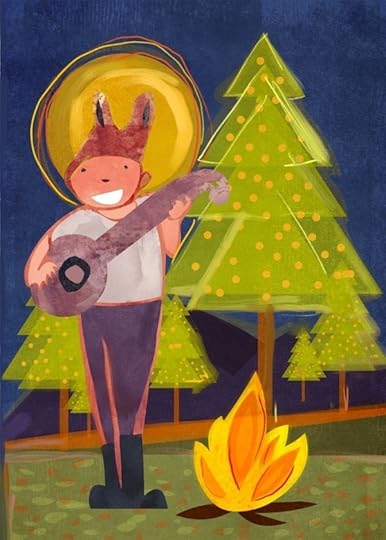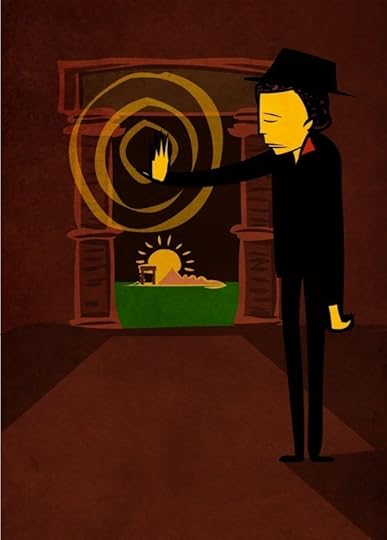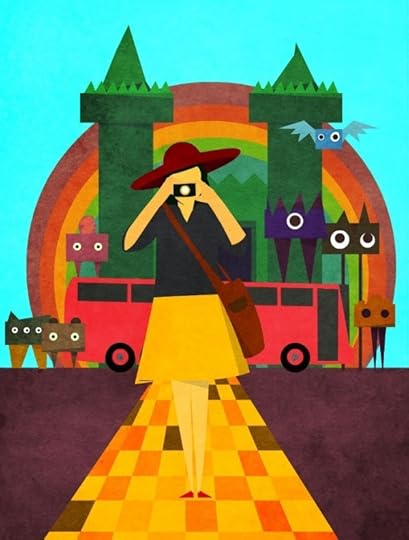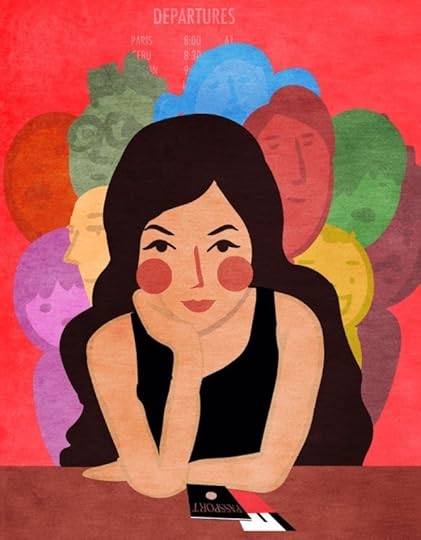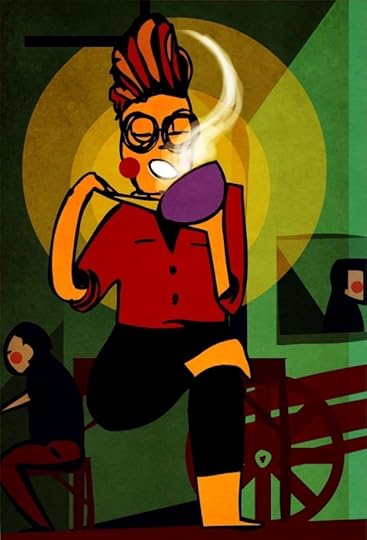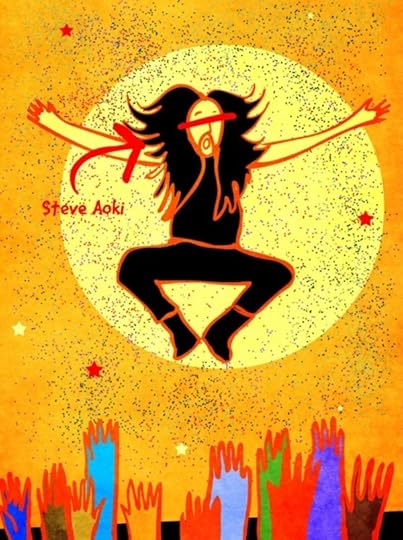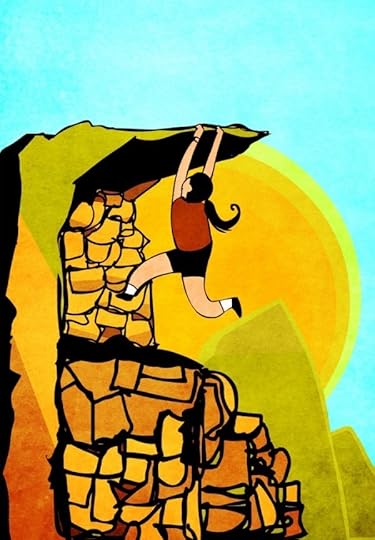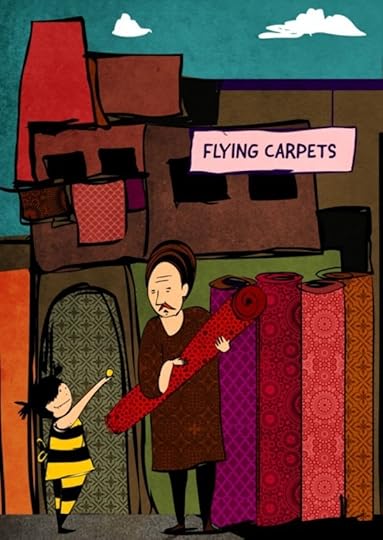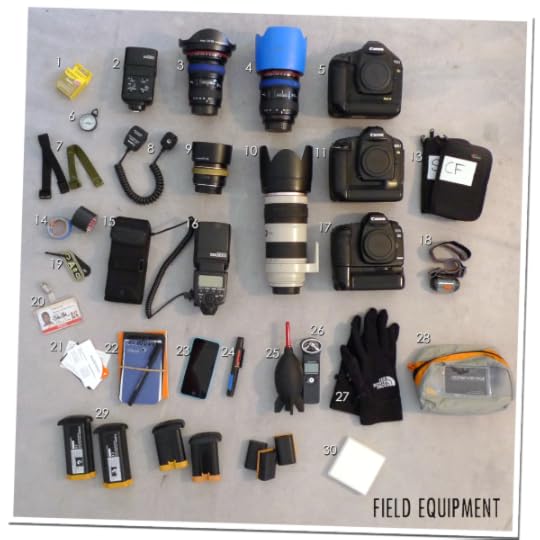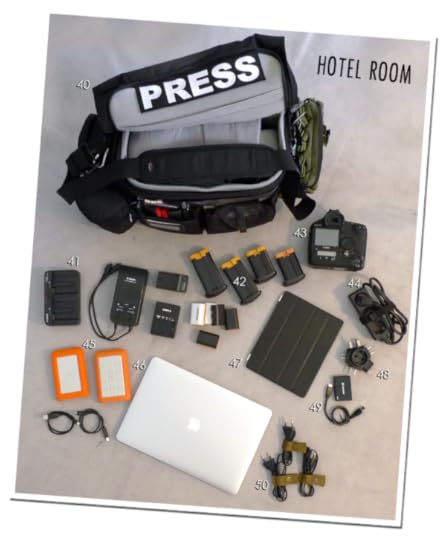Matador Network's Blog, page 2254
June 18, 2014
100,000 ducks stop traffic
WHILE IT’S DEFINITELY CUTE, I know how frustrating it can be to wait for a family of ducks to cross a busy road. Imagine being 150 miles from Bangkok, taking that frustration, and multiplying it by 100,000. This video of ducks being herded on a backroad in Thailand is hilarious, and positively frightening at the same time. It makes me wonder if they are being guided to slaughter, or if they managed to go Game-of-Thrones-kill-the-masters on the humans, and are now running for their lives. 

9 people to see the world with
Travelers come in many forms. They’re all different and have characteristics that make them excellent companions. I’ve come to meet a few:
The Navigator
The Navigator is never lost, at least not forever. Adept at pathfinding, with a keen sense of direction, she has an uncanny knack for plotting the best way to get to the final destination (although sometimes the best is not necessarily the fastest). She’s perfectly at home with using maps, the compass, or high-tech GPS devices. The navigator is also not afraid to ask for directions, knowing that the locals are her best resource.
The Jester
Often the first person to be invited on a trip is the one with a good sense of humor, because we all know that journeys are always better with comic relief. The Jester is a master at finding just the right time to crack a joke — to lighten the mood or to lift spirits. The best of them are superior empaths, knowing exactly how a group or individual feels. A few of the more talented Jesters also pick up skills like playing the guitar or consuming liquor in strange, comical ways.
The Historian
If you’ve ever wanted to travel through time, travel with the Historian. His knowledge of people and cultures is unmatched. With the Historian you’ll experience new places richly. Visit familiar sites, and you’ll see them with new eyes. When you roam the world with him, suddenly that 50-foot-high mundane rock wall that you gave little attention to becomes the site of an epic battle. What was once seen as an ordinary, worn-out house turns into a place of romance and revelry — all from a period long, long ago. Historians are natural sponges of information, and they’re among the finest storytellers.
The Journalist
You’ll notice the Journalist. She’s often the one with the camera — the big one. She might have a few notebooks in her pockets (and more in her backpack). At night, while everyone is asleep, she’s still busy writing the day’s blog entry. The folks at home eagerly wait for her photos, often wonderful, to be uploaded onto Facebook or Instagram. Do not mistake the Journalist for someone who’s not enjoying the moment — she is, in more ways than you can imagine. The Journalist is a multi-tasker and a keen observer. You’ll appreciate her greatly after your vacation ends and your life returns to normal, because her awesome stories and photos will bring back great memories.
The Charmer
When the Charmer speaks, people listen. It isn’t just her words, it’s the way she gestures that calms everyone around her. Don’t be surprised when even the most guarded strangers suddenly share their life stories with her. Her mind and actions are like poetry; they ebb and flow like an invisible aura. Many great favors have been done for travelers because their Charmer worked her magic — free food, better rooms, unexpected gifts. With the Charmer you’ll be able to visit spots ordinary tourists wouldn’t have the chance to see — often in modes of transportation reserved only for the most important people.
The Gastronomist
Michelin stars, you say? He knows where they are. Fine dining too snobby? Not a problem. He can find all the little holes-in-the-wall. The Gastronomist is a connoisseur and food hunter who’ll make sure that every day you travel, your meals will be delightful.
Party Animal
Say hello to the Party Animal. He knows how to have a good time. He’ll often be seen with a drink in one hand and a dance partner in the other. With the Party Animal, you’ll get access to all the exclusive clubs, and the bouncers will offer you fist bumps along the way. Prepare to collect stories of epic nights and many, many new acquaintances. The Party Animal is a creature of the night and a man of the moment.
The Adventurer
If you find yourself hanging on for dear life on some cliff as the wind howls into your ears, then you’re probably traveling with the Adventurer. The Adventurer never tires, and her energy is boundless. You’ll be tiptoeing through narrow mountainside paths or biking downhill at breakneck speed. Your accommodations are in her bag. Be prepared to be awed by majestic sunrises and the magnificent outdoors.
The Haggler
If it’s your first time shopping with the Haggler, remember one rule: Let her do the talking. She’s a master negotiator and can sniff out a good buy anywhere. The Haggler knows her way around the labyrinthine marketplaces of the world. When you travel with the Haggler, you’ll come home hauling bags brimming with new treasures. 
Illustrations by Mark Joseph Deutsch. This post originally appeared at Medium and is republished here with permission.

30 places under 4 hours from Oakland
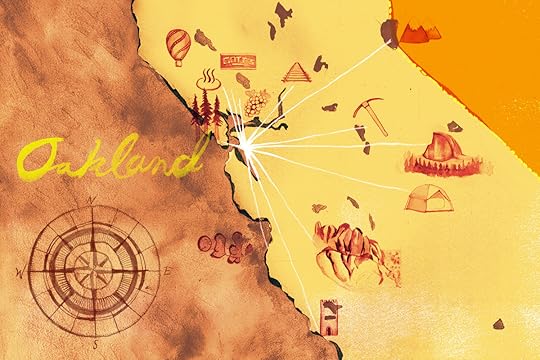
THERE’S SO MUCH GOING ON IN OAKLAND that using it as a mere stopover en route to somewhere else doesn’t make much sense. But you can’t look at a map without noticing the city’s proximity to a whole host of pretty amazing places. Here are some ideas for which way to point yourself when you’re finally ready to leave town, or just looking for an epic daytrip.
1. Yosemite National Park – Yosemite Village
Travel time: 3 hours, 39 minutes
Follow 1-580 E till 1-205 E. Take CA-120 E, continuing onto Evergreen Rd in Tuolumne County.
Bathed in a blanket of snow or dotted with pastel wildflowers, Yosemite Valley is a sight in any season. Wind through the valley and take in the sweeping vistas and wildlife from afar, or participate in outdoor activities such as hiking and fishing.
2. Golden Gate Fields – Berkeley
Travel time: 11 minutes
Take 1-80 to Gilman St in Berkeley. Take the Gilman St exit from 1-80 E until Eastshore Hwy. Turn onto Gilman St.
Situated on the edge of the bay, Berkeley’s famed racing track is the perfect way to spend a warm afternoon. Come on a Sunday, when everything costs a dollar — yes, even the beer.
3. Black Diamond Mines Regional Preserve – Antioch
Travel time: 45 minutes
From 1-880 N, take CA-24 E, 1-680 N, and CA-4 E to Auto Center Dr/Somersville Rd in Antioch. Exit CA-4 E at Somersville Rd.
In Mt. Diablo’s backyard, the preserve offers some 65 miles of trail to explore. Venture deep into the Hazel-Atlas mine to glimpse ancient geological features.
4. Lake Tahoe – Tahoe City
Travel time: 3 hours, 6 minutes
Take 1-80 E to US-50 E. Continue onto CA-89 S.
To everyone that has ever asked a Californian if they’ve ever seen snow, here’s your answer. The popular winter destination holds its own in summer, too, when Tahoe’s forest-enclosed, emerald freshwater lake mirrors the sky overhead.

Chabot Space & Science Center. Photo: Steve Jurvetson
5. Chabot Space & Science Center – Oakland
Travel time: 17 minutes
Take CA-13 N to the Joaquin Miller Road Exit. Turn right at Joaquin Miller Road and follow signs for Chabot Space & Science Center.
As a very hands-on learning experience — and the largest public telescope facility in the US — Chabot excels in its mission to engage visitors of all ages in science and space education.
6. Muir Woods – Mill Valley
Travel time: 43 minutes
Follow 1-580 W to US-101 S in Marin County. Take the E Blithedale Ave exit.
Take a walk through the 100-foot canopies of redwoods, and don’t forget to stop at the park cafeteria for the famed grilled cheese. Of course, make sure to check out Oakland’s own Redwood Regional Park as well.
7. Rafting the American River – Sierra Nevadas
Travel time: 2 hours
Take I-580 E, I-680 N, I-80 E, and US-50 E to the Placerville area.
The South Fork of the American is one of the most popular rafting and kayaking runs in the western US. With both rigorous rapids and calmer spots, this stretch of the American provides a unique perspective on the Californian landscape. It’s also steeped in history — the gold found in the South Fork’s stream inspired California’s 1849 Gold Rush.
8. Claremont Hotel Club & Spa – Oakland
Travel time: 5 minutes
Exit at Claremont Avenue off of CA-24 E.
A landmark resort and spa, the Claremont is located at the base of Claremont Canyon in the Berkeley Hills (in Oakland), overlooking the beautiful San Francisco Bay. Stop by for tea time to see why the Claremont’s prestigious reputation has endured.
9. Wine Country – Napa Valley
Travel time: 1 hour, 9 minutes
Follow 1-880 N and 1-80 to CA-37 W in Vallejo. Take the CA-37 exit from 1-80 E. Drive to CA-29 N in Napa County.
California’s wine country is second to none in the country. With a whole web of vineyards to choose from, you’re sure to find a blend to your liking. Or, if you don’t want to make the drive, you can find many regional offerings at one of Oakland’s highly rated wine bars and urban wineries.
10. Mavericks – Half Moon Bay
Travel time: 51 minutes
Take CA-92 W to CA-1 N in Half Moon Bay. Continue on CA-1 N to your destination in El Granada.
True, you can’t actually reach the site of the Mavericks Invitational surf competition without getting a little wet. But the panoramic coastal view of Half Moon Bay is worth the drive.

Read more from this series: 20 things you didn't know about Oakland
11. Fishing Lake Chabot – Castro Valley
Travel time: 30 minutes
Take 1-580 E to 35th Ave, which becomes Redwood Rd as it winds through the hills and leads to the lake’s north shore. For the marina, arrive on the south.
Just south of Redwood Regional Park and a quick drive from downtown Oakland, Lake Chabot Regional Park has well-stocked waters that make it a great place for casual fishing, especially for kids / first-timers. You can also take a boat tour, or explore the park via hiking and bicycle trails.
12. California Academy of Sciences – San Francisco
Travel time: 28 minutes
Get on 1-880 N until 1-80 W to Octavia Blvd in San Francisco. Take Fell St and Kezar Dr to Music Concourse Dr.
One of the largest natural history museums in the world, the Academy of Sciences is an interactive display of wonderment, curiosity, and exploration. Where else can you wander through a rainforest biome and marvel at an albino alligator?
13. Pinnacles National Park – Paicines
Travel time: 2 hours, 3 minutes
Follow 1-880 S and US-101 S to CA-25 S in Santa Clara County. Take CA-25 S to CA-146 W in San Benito County.
Home to some of the best routes for all skill levels, Pinnacles National Park seems made for climbers. There are also caving and camping options for those who prefer to keep their feet on the ground.
14. Sonoma Plaza – Sonoma
Travel time: 55 minutes
Take I-580 W and US-101 N to CA-37 E in Novato. Take the CA-37 exit from US-101 N.
From Mexican military outpost to Spanish mission village, historic Sonoma Plaza is California historical icon. Stroll by the duck ponds or circle the plaza for some window-shopping in the surrounding boutiques.
15. Bay Bridge – Oakland
Travel time: 5 minutes
Take I-80 west out of town.
After a long wait, the new eastern span of the Bay Bridge (between Oakland and Yerba Buena Island) opened to much fanfare last fall. The attractive structure includes pedestrian and bike paths, allowing non-motorists to enjoy the striking views of the East Bay for the very first time.

Photo: Eddie
16. Telegraph Avenue – Berkeley/Oakland
Travel time: 2 minutes
Exit at Claremont Avenue from CA-24 E. Turn right onto Telegraph from Claremont.
Home of many historic counterculture protests of the 1970s, Telegraph continues to attract conscientious citizens and students championing social causes. It also has some excellent restaurants, particularly those serving Ethiopian cuisine.
17. Mount Diablo – Contra Costa County
Travel time: 1 hour, 4 minutes
Take I-880 S, I-238 S, I-580 E, Crow Canyon Rd, and Diablo Rd to Mt Diablo Scenic Blvd in Blackhawk.
Mount Diablo’s famous double pyramid caps out at almost 4,000 feet. The Bay Area landmark gives remarkable views of the region — on a clear day, you can see the Sierra Nevadas on the far eastern horizon.
18. Calistoga spas – Calistoga
Travel time: 1 hour, 24 minutes
Follow 1-80 E to CA-29 N/Sonoma Blvd.
The car ride to Calistoga may be a breezy trip, but it still warrants a little R&R. Revitalize yourself with a mud bath, massage, or dip in the hot springs at one of the many spas in the area.
19. Monterey Bay Aquarium – Monterey
Travel time: 1 hour, 54 minutes
Follow I-880 S and US-101 S to CA-156 W in Prunedale. Take the exit toward Monterey/Peninsula from US-101 S. Follow CA-1 S to Del Monte Ave in Monterey. Exit at Del Monte Ave off of CA-1 S.
A real-life Finding Nemo, the Monterey Bay Aquarium exhibits an impressive variety of marine life — from stingrays you can touch to luminescent jellyfish, kelp forests and, of course, sea otters.
20. California State Railroad Museum – Sacramento
Travel time: 2 hours
Catch the Amtrak Capitol Corridor train from downtown Oakland.
Bringing to life the golden days of railroad travel, this museum features 19 steam locomotives and interactive educational programs. Even better, you can get there via Amtrak’s Capitol Corridor service. Catch the train in Jack London Square and two hours later you’re in downtown Sacramento, a short walk from the museum.
21. Google Headquarters – Mountain View
Travel time: 45 min
Drive on CA-84 W until you hit US-101 S in Menlo Park. Take the Rengstorff Avenue exit in Mountain View.
Dive into the heart of the digital world at Googleplex in Mountain View. You’re sure to leave inspired to create a new app. Don’t worry, this is a common side effect of visiting Silicon Valley.

Read more from this series: 18 reasons everyone cool and creative is moving to Oakland
22. Hot air ballooning – Wine Country
Travel: 1 hour, 26 minutes
Take the Suisun Valley Rd/Pittman Rd exit from 1-80 E. Follow Suisun Valley Rd to CA-128 W in Napa County.
Drift over the elaborate patchwork quilt of vineyards that comprise Napa Valley. Take in the rolling hills and expansive greenery, culminating in a tasting or two at the wineries below.
23. Hearst Greek Theatre – Berkeley
Travel time: 14 minutes
Exit at Claremont Avenue from CA-24 E. Take College Ave to Gayley Rd.
UC Berkeley’s outdoor amphitheater has hosted multi-genre musical legends and motivational speakers (such as the Dalai Lama) for over a hundred years now.
24. Gold Country – Columbia
Travel time: 2 hours, 18 minutes
Take 1-580 E and 1-205 E to CA-120 E. Take CA-108 E to Jackson St/Yankee Hill Rd in Columbia.
Experience your own taste of gold fever as you immerse yourself in historic gold country. For an authentic experience, visit Columbia State Historic Park just north of Sonora. From the traditional garb to the stagecoach rides and panning for gold, you’ll be hooked in no time.
25. The Mountain Play – Mill Valley
Travel time: 1 hour
1-580 W to US-101 S. Exit toward Stinson Beach from US-101 S, following CA-1 S to Panoramic Hwy.
Every spring atop Marin County’s landmark Mt. Tamalpais brings a unique theatrical tradition — the Mountain Play. Pack a picnic, lather on the SPF, and settle into the stone rows built into the mountainside. Not a fan of musicals? Just enjoy the one-of-a-kind view of the bay.

Photo: Teemu008
26. Hearst Castle – San Simeon
Travel time: 3 hours, 40 minutes
Take US-101 S to CA-46 W/Green Valley Rd in Paso Robles. Take the CA-46 W exit from US-101 S. Follow CA-46 W/Green Valley Rd and CA-1 N to Hearst Castle Rd.
Both a National and California Historical Landmark, Hearst Castle is the embodiment of early-20th-century excess. Lavish and opulent (56 bedrooms!), the estate’s impressive architectural features and extensive art collection are open to the public for tours — and gawking.
27. Six Flags Discovery Kingdom – Vallejo
Travel time: 33 minutes
Follow I-880 N and I-80 to CA-37 W in Vallejo. Take the CA-37exit from I-80 E.
This 135-acre amusement park showcases animal attractions in addition to the usual Six Flags roller coaster thrills. Head to the water rides for an opportunity to cool down after your day of fun in the sun.
28. Bass Lake – Madera County
Travel time: 3 hours, 18 minutes
Follow 1-580 E to 1-205 E and then CA-99 S. Get on CA-140 E, exiting at Red Bud in Madera County.
Bass Lake is a popular destination for water recreation and camping in the Sierra Nevada foothills just south of Yosemite. Rent a boat or jet ski, or just enjoy the sandy beach shores that line the lake.
29. Gott’s Roadside – St. Helena
Travel time: 1 hour, 9 minutes
Drive on 1-80 E until CA-37 W in Vallejo. Merge onto CA-29 N in Saint Helena.
Gott’s Roadside (formerly — and fondly — known as Taylor’s Refresher) takes everybody’s favorite American drive-in to a wonderful new level. Locally sourced California ingredients, the winery town of St. Helena as its backyard…Gott’s makes for a worthy daytrip from Oakland. Try the ahi burger.
30. Bixby Creek Bridge – Big Sur
Travel time: 2 hours, 12 minutes
Take 1-880 S to US-101 S. Get on CA-1 S in Monterey County.
That iconic arched bridge you always see in photographs and car commercials? Yeah, that’s the Bixby Bridge. With a stunning panorama of the Pacific Ocean and Central California’s lush coastal cliffs, Bixby Bridge is one span of road that itself is worth a drive. 

This post is proudly produced in partnership with our friends at Visit Oakland. Find us on social and use the hashtag #oaklandloveit to share your Oakland story.

What journalists carry: D. van Moll

Armed UN forces patrolling the streets in Eastern Democratic Republic of Congo on February 18th, 2014. All photos: Author
Matador is teaming up with the FFR1 to show you what conflict and foreign freelancers carry with them on assignments.
Award-winning photojournalist Daniel van Moll was born in 1978 in Duesseldorf, Germany. He started photographing at the age of 12 when he got his hands on his first camera, a Canon EOS-1, and never really stopped.
In the early stages of his career, he worked as a host and producer for NBC Universal, and he’s lived in San Francisco, Berlin, and Duesseldorf. He’s currently based in Munich, Germany.
He’s spent a significant amount of time working with NGOs on six continents, documenting humanitarian projects and the work of charity organizations.
Daniel has worked in 12 different African countries, all over the United States, and in most of the Middle East countries. He covered the street riots in Turkey in June/July 2013, the turmoil in Egypt in August 2013, and the unrest in Ukraine in early 2014. He’s been published in magazines and books in Germany, Canada, the United States, and the United Kingdom, with exhibitions in Germany, Italy, England, Switzerland, and Iraq.
In 2012, Daniel made humanitarian and conflict photography the core theme of his work. In 2013 he joined the Frontline Freelance Register (FFR). His most recent assignments have brought him to the Democratic Republic of Congo, covering the refugee situation along the eastern border.
Follow Dan via his website, Twitter @danvanmoll, Facebook, or Instagram.

Among the hundred thousands of refugees in Eastern Democratic Republic of Congo are countless children. Many have lost parents or family in the ongoing conflict.
Here’s what he carries while covering conflicts all around the globe.
FIELD EQUIPMENT
1. Ear plugs — handy against flash-bangs and stun grenades
2. Small backup flash (Canon 320EX Speedlite)
3. Wide-angle lens (Canon 16-35 LII F/2.8) — my favorite lens
4. Standard zoom (Canon 24-70 L F/2.8)
5. Canon 1Ds Mark III body
6. Compass — never trust your iPhone’s compass
7. MOLLE straps — perfect for attaching gear to your armor
8. Canon OC-E3 cord — for off-shoe flash use
9. Canon USM 50mm F/1.4 — for low-light situations
10. Tele lens Canon 70-200 L F/2.8 IS
11. Canon 1Ds Mark II body
13. Lots of CF and SD memory cards — lots
14. Tape (black & blue) — it’s your friend!
15. External compact battery pack — for the flash
16. Canon 580 EX II flash — even though I hate flash photography
17. Canon 5D Mark II body
18. Headlight — for packing up at night and staggering around the hotel room during blackouts
19. Blood-type patch — attached to jacket/shoes
20. International IFJ press ID
21. Random business cards from NGOs/drivers/fixers
22. Notebooks, pen, and passport copies
23. iPhone — with digital passport copies on Dropbox.com
24. Lens pen — for quick cleaning. I really love this one!
25. Giotto Airbomb bellows — to blow away dust
26. Zoom H1 audio recorder — for interviews and atmosphere
27. Thin gloves — you never know when it’s getting dirty!
28. Lots of batteries and cleaning cloths/leather
29. Some backup batteries — that I never need
30. Protective filters (UV)
PROTECTIVE AND MISC. GEAR
31. Body armor (Condor Quick Release Plate Carrier with velcro fields for PRESS patches on the front and back, filled with ballistic front- and back-plates — NIJ class IV) — I usually removed the plates unless live ammunition is used
32. Ballistic helmet (class NIJ IIIA)
33. Newswear chestvest (weather sealed) — for carrying lenses, batteries, flash, and backup body. Best investment ever made!
34. First aid kit — the most important piece of gear. Make sure to refresh courses every year!
35. Lucky charm — okay, it’s just an old chestnut, but it seems to work…
36. Lip balm
37. Sunglasses
38. Ear plugs — for long and lonely cab rides
39. Sunsniper camera strap (double harness)
HOTEL ROOM STUFF
40. Lowepro Stealth Reporter 650AW — with some extra bags attached to it. Weighs around 25kg with all gear packed but fits perfectly in overhead compartments. I use this to haul my equipment to the next hotel room. In the field I use the Newswear chestbelt (see #33) and Sunsniper harness (see #39)
41. Lots of battery chargers — I wish Canon would stick to one system for its pro series bodies
42. Even more batteries (see #41)
43. Canon 1Ds Mark II — backup body I leave at the hotel room
44. Power strip — can be a lifesaver!
45. LaCie Rugged hard drives (master and backup, plus an extra backup at home) — I usually try to store them separately
46. Mac Book Pro Retina — the workhorse
47. iPad for casual reading while on the plane/layovers
48. International power adaptor
49. Card reader — I usually carry at least three
50. Cables — so many cables

1The Frontline Freelance Register (FFR) is a representative body for freelancers, created and run by freelancers. It is an independent, ring-fenced entity which sits within the Frontline Club Charitable Trust with membership open to all freelance journalists working in conflict or foreign reporting. The FFR’s core objective is to support the physical and mental well-being of freelance journalists. In a world where staff jobs and fully paid foreign assignments are increasingly scarce, foreign and war reporting is dominated by freelancers, many of whom are deeply committed professionals doing outstanding work. At the same time, many of these freelancers lack the institutional support and the financial means to adequately manage the challenges of operating in dangerous environments in the long term. They also lack organised representation, often leaving them at the mercy of powerful media groups. FFR aims to help freelancers by providing them with a forum, a representative body, and a critical mass to face some of these challenges.

40 bizarre US roadside attractions

(via)
A public art installation by members of the Ant Farm, Cadillac Ranch is a row of Cadillacs buried nose-first into the ground. The angle at which they jut out of the earth corresponds to the Great Pyramid of Giza.
2. Minister’s Treehouse (Crossville, Tennessee)

(via)
The treehouse, built by Minister Horace Burgess, contains 80 rooms, including a church and a bell tower. Minister’s Treehouse was closed by the state fire marshal in 2012.
3. Prada Marfa Store (US Route 90, Texas)

(via)
An art installation by Elmgreen and Dragset, Prada Marfa is a building (miles from the nearest town) resembling a Prada store. The store is never open, and the door is nonfunctional.
4. Corn Palace (Mitchell, South Dakota)

(via)
The Corn Palace is a building built in the Moorish Revival architectural style. The murals covering the building are made of corn and other grains. The site is visited by over 500,000 people annually.
5. Paul Bunyan and Babe the Blue Ox (Bemidji, Minnesota)

(via)
The statue of Paul Bunyan is 18 feet tall — Babe is 10. Like so many entries on this list, these statues attracted a lot of the earliest road trippers in the 20th century.
6. Harvey the Giant Rabbit (Aloha, Oregon)

(via)
Harvey is a 23-foot-tall rabbit (with a human body). The fiberglass statue used to have a service station man’s head before he gained his new ears.
7. Claude Bell’s Dinosaurs (Cabazon, California)

(via)
Located in Cabazon, California, Claude Bell’s Dinosaurs (also known as the Cabazon Dinosaurs) include a 150-ton Apatosaurus-shaped building, as well as a 100-ton Tyrannosaurus Rex sculpture.
8. Carhenge (Alliance, Nebraska)

(via)
A replica of Stonehenge, Carhenge features 38 automobiles spray-painted gray. Jim Reinders built the site in 1987 as a memorial to his father.
9. Dog Bark Park Inn (Cottonwood, Idaho)

(via)
The World’s Biggest Beagle is actually a bed and breakfast. Locals refer to the 30ft-tall two-story building-dog hybrid as Sweet Willy.
10. The Peachoid (Gaffney, South Carolina)

(via)
While appearing to be a giant peach upon first sight, the Peachoid is actually a 135ft-tall water tower. (What a surprise. I know.)
11. The Blue Whale of Catoosa (Catoosa, Oklahoma)

(via)
Found off of old Route 66, the Blue Whale of Catoosa sits in a pond were locals and visitors used to be able to swim — notice the slide coming out of the whale.
12. F.A.S.T. Corp’s Fiberglass Statue Mold Yard (Sparta, Wisconsin)

(via)
Fiberglass, Animals, Shapes, and Trademarks Corp. can be found in Sparta. You’ll also find dozens of the fiberglass molds they make right in their backyard.
13. World’s Largest Six Pack (La Crosse, Wisconsin)

(via)
The World’s Largest Six Pack was originally built in 1969. These tanks, which have since been painted over in a different style, contain 22,220 barrels of beer.
14. World’s Largest Catsup Bottle (Collinsville, Illinois)

(via)
A water tower designed in the shape of a ketchup bottle, the World’s Largest Catsup Bottle made its way onto the National Register of Historic Places.
15. Longaberger Basket Company (Newark, Ohio)

(via)
Upon first sight, the structure may appear to be a sculpture, but it’s actually an office building for the Longaberger Basket Company (which, unsurprisingly, manufactures wooden baskets).
16. Flintstones Bedrock City (Custer, South Dakota)

(via)
The Flintstones Bedrock City is a small theme park and camping resort in South Dakota. Entering the theme park costs $10, while a season pass runs $15. Take that, Disney.
17. World’s Largest Loaf of Bread (Urbana, Ohio)

(via)
Difficult to find, the abandoned large loaf of bread in Urbana still attracts tourists. It sits behind an old factory on private property.
18. Lucy the Elephant (Margate City, New Jersey)

(via)
A great example of novelty architecture, Lucy the Elephant is a six-story building. The structure was built with hopes of increased real-estate sales and tourism.
19. World’s Largest Ball of Twine (Cawker City, Kansas)

(via)
The World’s Largest Ball of Twine in Cawker City was built as a response to the Minnesota town of Darwin’s efforts to grab the title.
20. Coral Castle (Miami, Florida)

(via)
The Coral Castle is a stone (and coral, obviously) structure built by Edward Leedskalnin. It took Leedskalnin 28 years to build.
21. Field of Corn (with Osage Orange Trees) (Dublin, Ohio)

(via)
Also known as Cornhenge, the art installation Field of Corn (with Osage Orange Trees) was publicly funded and consists of concrete ears of corn placed in rows.
22. National Freshwater Fishing Hall of Fame and Museum (Hayward, Wisconsin)

(via)
The National Freshwater Fishing Hall of Fame and Museum is just that, a museum. The notable part? One of its buildings is a 143ft-long fiberglass sculpture of a fish (actually made by F.A.S.T. Corp).
23. Wee’l Turtle (Dunseith, North Dakota)

(via)
Found in North Dakota, the Wee’l Turtle is an 18ft-tall structure made of 2,000 wheel rims, built in 1982 by George Gottbreht.
24. Devil’s Rope Museum (McLean, Texas)

(via)
The Devil’s Rope Museum is dedicated in its entirey to barbed wire. The building in which the museum sits is a converted brassiere factory.
25. Skunk Ape Research Headquarters (Ochopee, Florida)

(via)
The Skunk Ape (also known as the Florida Bigfoot) is a hominid cryptid which supposedly lives in Florida. Despite its remaining undiscovered by the scientific community, there’s research to be done!
26. Wall Drug Store (Wall, South Dakota)

(via)
Wall Drug Store is a shopping mall and large tourist attraction in the city of Wall, which had a population of 766 as of 2010.
27. The Enchanted Highway (Regent, North Dakota)

(via)
The Enchanted Highway is said to be the world’s largest scrap-metal collection. The sculptures are found intermittently alongside a highway (which has no highway number) in North Dakota.
28. The Jolly Green Giant (Blue Earth, Minnesota)

(via)
The town of Blue Earth, Minnesota, paid $43,000 to erect the 55ft statue in 1978. Over 10,000 people visit the statue yearly.
29. Petrified Wood Station (Decatur, Texas)

(via)
E.F. Boydston built a gas station (on land he paid $400 for) in Decatur, Texas, in 1927. Years later, he decided to adorn the outside with petrified wood.
30. Stonehenge II (Ingram, Texas)

(via)
A replica of England’s Stonehenge, Stonehenge II can be found in the Texas Hill Country. Additionally, two Moai (the famous heads of Easter Island) have also been erected on the site.
31. Vent Haven Museum (Fort Mitchell, Kentucky)

(via)
Vent Haven claims to be the only museum devoted to ventriloquism, with a collection of over 700 ventriloquism-related items and dolls.
32. Leaning Tower of Niles (Niles, Illinois)

(via)
The Leaning Tower of Niles is a replica of the Leaning Tower of Pisa at half scale. It was built in 1934. A 2014 survey suggested the tower is in need of $600,000 worth of repairs.
33. Salvation Mountain (Niland, California)

(via)
An art installation built by the late Leonard Knight, Salvation Mountain contains murals of Bible verses and Christian quotes. It made an appearance in the 2007 film Into the Wild.
34. Queen Califia’s Magical Circle Garden (Escondido, California)

(via)
French artist Niki de Saint Phalle created Queen Califia’s Magical Circle Garden. The sculpture garden consists mainly of fiberglass and mosaic.
35. Mammy’s Cupboard (Natchez, Mississippi)

(via)
Mammy’s Cupboard, a restaurant on US Route 61, is built in the shape of a skirt with a woman adorning the top. Her earrings are made of horseshoes.
36. Metaphor: The Tree of Utah (Bonneville Salt Flats, Utah)

(via)
Also known as The Tree of Life, Metaphor: The Tree of Utah is an art sculpture created in the 1980s by Karl Momen. The statue is made of concrete and natural minerals native to Utah.
37. Porter Sculpture Park (Montrose, South Dakota)

(via)
A sculpture garden off South Dakota’s Interstate 90, Porter Sculpture Park is home to many sculptures made of salvaged materials. The largest is a 60-foot-tall bull head.
38. Albert the Bull (Audubon, Iowa)

(via)
The statue of Albert the Bull was built, mostly of concrete, in 1964. It measures 33 feet tall and 30 feet long and weighs a monumental 45 tons.
39. World’s Largest Office Chair (Anniston, Alabama)

(via)
The 33ft chair was originally built as a promotional effort for Miller’s Office Furniture in Anniston, Alabama. Ten tons of steel were required to construct the chair.
40. Dinosaur Gardens Prehistoric Zoo (Ossineke, Michigan)

(via)
Dinosaur Gardens Prehistoric Zoo isn’t exactly a zoo — it’s a park with sculptures of dinosaurs and cavemen. For some reason, there’s also a statue of Jesus Christ at the front of the park. 

June 17, 2014
17 scams to avoid in India

Photo: sandeepachetan.com
1. Taxi driver commissions
When a taxi driver tells you your hotel has moved / burned down / changed names, this most likely isn’t true. The driver is going to take you to his friend’s place in exchange for a commission. On the way, he’ll ask if you’re hungry or need a pashmina. Anywhere he drops you, he’s getting commission. Unfortunately, India isn’t the place to ask your driver to take you to the best local food in town — he’ll just take you to his cousin’s place. If you get to know a driver and use him often, then you can start to build trust.
2. Fake SIM cards
Beware of the SIM card scam. If you buy a legitimate SIM in India, you need to fill out paperwork, give a copy of your passport, and provide a 2×2 photograph. If they don’t ask for all that, they’re either giving you a used SIM — meaning you’ll get calls all day from rando Indians — or they aren’t even planning on filing your paperwork which means the SIM you just put 500 rupees on will shut off before you can even use it. As a tourist, it might be best to go straight to the main office of Vodaphone, Idea, or whatever company you choose. Vodaphone is the worst — they turned off three of my SIMs!
3. Road-fee shakedown
If the police stop your taxi (and no one else’s) and tell you to pay a road fee, they’re lying. The cab driver might tell the cop no or he might tell you he can’t go until you pay. You can either pay the “fine,” “fee,” “tax,” or whatever they want to call it and be on your way, or you can argue it. If the driver won’t go and you’re forced to pay, just know that the “fee” won’t go to maintain the road — it’ll go for the cop’s next beer. On the other hand, tolls are real and the passenger does have to pay.
4. Inflated bar tabs
Unscrupulous bartenders will add extra cocktails to your bill and base the 10-15% service charge on the incorrect bill total. After telling the bartender you didn’t order them, they’ll say “Oops, that was another table!” They’ll subtract the drinks from your bill, but that’s just the first half of the scam. What they won’t do is adjust the service charge to reflect the new, lower bill amount. Have them make you a whole new bill with the correct total and service charge.
5. Swapping rupees
You’ll give a taxi driver or shopowner 1,000 rupees, only to have them say you gave them 100. Expect to have to argue this one. To prevent it, show the bill amount very clearly as you hand it over. Most times, in a scam like this, if you ask for help from people on the street the scammer will turn honest quickly.
6. Milk and pens
It begins innocently enough with you thinking, “I won’t give this beggar money and make the begging situation worse. Instead, I’ll go to the local store and get them milk for their hungry baby or pens for the kids to use in school.” The pens thing is big in Hampi and Kerala. The milk scheme is popular everywhere. The beggars are in cahoots with the stores and will return the product when you leave, and receive their cut — in cash. It’s a sad scam because you’re genuinely trying to help.
7. Fake cashmere
“Pashmina? Cashmere? Only 1,000 rupees!” You’ll never get real cashmere that cheap, so you know right away it’s fake. You can negotiate down to 500 but you’re still overpaying for a silk-blend product. The upside is that even some of these fake cashmere products are beautiful!
8. Costly travel agents
You may buy a one- or two-week “tour” (which is really nothing more than bus tickets and hotel reservations) through an agent. They’ll charge you a higher price for each leg of a driving route, and a higher rate than normal for each hotel, while they take commission on each night’s accommodation. Keep in mind local buses can get you from point A to B overnight for somewhere around 300-700 rupees no matter where you’re going. Don’t give in to the temptation because of stress. I met loads of girls who’d paid for these “tours,” and all paid more for two weeks than I did for three months of travel.
9. Fake train ticket offices
These are tricky and happen all over the world — use your best judgment. This one in Delhi was the worst and made me want to punch a biatch!
10. Bracelet “gifts”
Kids or “holy men” will put flower bracelets or red string on your wrist, saying “It’s a gift!” It’s not a free gift — just say no!
11. Pushkar Lake scam
This one is cute. The holy man will do a ceremony for a previously agreed price, let’s say 100 rupees. He’ll ask how many people are in your family and bless them, each and every one. Afterward he’ll say, “You misunderstood. 100 rupees per person in your family. Pay me 500 or I will curse your whole family!” Like I said, it’s a cute one. Pay Rs 100 and walk away. You can’t let people get away with things like that; you have the right to pay what’s fair and leave.
12. The name game
If there’s a popular hotel or restaurant, you’d better believe there is another one with a similar or even the exact same name nearby. If it’s a popular place, you can bet your driver knows it. If he takes you to the wrong one, he’s done it on purpose. Try to remember what the place looks like from pictures online.
13. Pre-paid taxis
Are pre-paid taxis at the airport always the best deal? No way. Bombay, Delhi, and Bangalore all offer pre-paid taxis at obscene prices. A meter is the best deal, but it’s almost impossible to get a driver near an airport to use one. You’ll want to go to a government-approved pre-paid stand like MERU cabs and pay the Rs. 50 for a ticket. The driver will then meet you outside and will use his meter. Use your GPS to ensure he follows the shortest route.
14. Pre-paid hotels
Get a receipt if you pay upon arrival at a hotel. I’ve had a couple places try to make me pay again at check-out, swearing I never paid. This goes for more than hotels; get a receipt for anything you pre-pay. If you agree on a set price at check-in, get it in writing.
15. ‘Help’ from strangers
Strangers on the street will offer to give you directions, or help you find something, and then demand money. If you’re somewhere touristy like Varanasi and someone starts to tell you about what’s happening around town, they will demand money afterward. As soon as they start talking, tell them you aren’t interested. They’ll say “No, no, I’m just being your friend.” But they aren’t. Sadly.
If you want a guide, go for it, but work out a price ahead of time. Even airport employees will do this. I was yelled at in Bombay by an employee once he pointed out where the ticket printing counter was located. Apparently, he didn’t think that should be a free service. He followed me, yelling for five minutes until I lost my cool and yelled back. Eventually, another employee came over and broke it up.
16. Broken taxi meters
“Meter is broken miss.” It’s not broken. In Bombay, it’s illegal not to use a meter (however, near tourist attractions they will never turn it on). When you say you’ll tell the police, the invisible meter fairy always fixes the meter. For taxis outside Bombay that don’t use a meter, agree on a price beforehand. Show them the map on your phone if they do use a meter (even if it’s a fake map), so they go the shortest route. It will save you money and prevent anger issues.
17. Fast taxi meters
Keep in mind, just because taxis are willing to use a meter doesn’t mean the meter is set appropriately! Just use your best judgement. You’ll get used to how fast the meter should run. If it’s going too quickly, call the guy out on it, threaten to tell the police, and leave.
If you get to your destination and you KNOW the amount you should pay because you take it often, just give that much. The driver won’t argue because they know what they’ve done. I’ve done this often. You can even say, “You must be able to tell that meter is broken, see how fast it went? I know you’re an honest man, so you won’t charge me that price. You’re taking it to get fixed now, yes?” Since the guy knows he’s caught, it’s an out for him to take without being embarrassed and will prevent a fight. 
This post originally appeared on HippieInHeels and is republished here with permission.

The last real party in SE Asia

Photo: Sergi Hill
Southeast Asia is hardly the final frontier when it comes to backpacking. Buses specially tailored for foreign tourists line every Bangkok street corner; tubing the Nam Song in Laos ends with gift shops; pancakes and spaghetti are ubiquitous even in Burma.
When I first went to Koh Phangan in 2013, I was expecting this — just a few days in Southeast Asia and you quickly learn of Koh Phangan’s reputation as the go-to place for manufactured buzz and bliss. It wasn’t like we didn’t have a good time, but the days of The Beach were long, long gone. It felt more like a frat party than an underground adventure.
My partner Ryan and I spent our time on Koh Phangan with a German couple with whom we’d spent about two months in India the previous year — lovely, rough-around-the-edges, wildly intelligent hippies whom I’d trust with my life, given that with them I’d shared the most traumatic experience of my life. When they told us we’d do ourselves well to get to Koh Rong, Cambodia, as soon as possible, we knew it was something we’d need to rearrange our (very loose) travel plans to do.
We arrived in Sihanoukville on an overnight bus from Siam Reap. The smell of saltwater and sand was laced with traces of moto exhaust and street food, and we found ourselves herded to the Koh Rong Dive Center — the only place, we were told, we’d be able to book a ticket on a ferry to the island (which actually isn’t true). Because Simon and Isa had described Koh Rong as one of the last truly wild places on Earth, we were surprised at what a well-oiled machine the process of getting there seemed to be. There were two ferries that left Sihanoukville each day to make the two-and-a-half-hour journey to the island.
We arrived just before sunset, and despite our misgivings in Sihanoukville, it only took a few minutes after our arrival to realize that Simon and Isa had been right.
Koh Rong is an island about the size of Hong Kong, with 28 beaches that ring an untamed mess of virgin jungle. The main beach where the ferry dropped us off is home to Koh Toch, a village settled about 25 years ago. Locals traditionally made their living as fishermen on brightly painted Cambodian longboats, and, whether it was the sun or the surf, or the happy abundance of fish in the rich waters, these were some of the friendliest people we’d ever met. Being invited to sit down to a traditional dry salted fish and rice dinner with a Khmer family was common. On Koh Phangan, being invited to sit down for dinner with a local — or being asked to hold their baby or play with their kids or have a warm and watery local beer with a crew of old men playing cards — is unheard of. It’s not as if Thailand lacks an authentic culture…but the country, especially its islands, has been inundated with foreign tourism for so long that it’s far more difficult to forge sincere connections than it was on Koh Rong.
If you’ve ever traveled in Southeast Asia, you’ve heard people complain about “how it’s changed, how it used to be.” I don’t mean to be one of those people.
Looking at the beach, the village is situated left of the community pier, mostly foreign-owned guesthouses to the right. Going left meant being in Cambodia proper: thatched roofs, rusted metal, very free-range chickens, boats older than my mother being refurbished 24/7 by old men with gnarled hands. Going right meant an untouched beach paradise with water as clear as crystal and sand as white as snow. It sounds cliché, but this is what the cliché is actually meant to describe. I wouldn’t have believed just how white sand could be or how crystal the ocean until I came to Koh Rong.
Always seeking off-the-beaten-track adventure, Ryan and I decided to spend our first five nights on Long Beach, a 7km strip on the other side of the island, through the jungle. We strung our mosquito-netted hammocks between a couple of scraggly beach trees and ran around playing Robinson Crusoe for those days, catching crabs on driftwood branches, cooking instant noodles on our small camp stove. We were fulfilling our separate but similar childhood fantasies of living on a deserted island, and they were some of the most fantastic days we’d ever spent.
When we traversed back to Koh Toch beach, we realized we weren’t going to leave any time soon. In 2013, there were roughly 20 guesthouses on the beach, and electricity ran reliably only between about 5pm and midnight. We spent our days lazily passing joints on the tourist end of the beach, or playing with kids in Koh Toch. The Koh Phangan nights of Long Island iced tea buckets and prepackaged EDM and capsules of crappy MDMA were nonexistent. This was a real party, a real pursuit of pleasure; travelers spent their evenings spinning poi, playing guitars, swapping stories, singing by candlelight. Don’t get me wrong — we drank. A lot. And it’s not as if we didn’t have speakers that played loud dance music or pass time until the wee hours of the morning dancing on the beach and skinny dipping with the phytoplankton.
But this was the business of pleasure. Not getting fucked.
In 2014, a lot of this has changed. Most of it’s good — the Friends of Koh Rong (founded and run for over a year by the unbelievably talented and determined Kelly, Fran, Jacki, and Eliza) have renovated the school in the jungle. Jacki and Eliza just recently moved on, but Kelly and Fran, with the help of Bun Te, a half-Vietnamese, half-Cambodian man who’s lived on the island for a little longer than three years, and long-term volunteers who can dedicate six months or more, now teach several different English classes. FOKR is also involved in community development and environmental awareness. There are now signs in all the guesthouses that remind people that the water they use to shower is “local people’s drinking water,” and to keep their showers short. Locals who used to make $60 a month now gross more than $600. Mr. Run’s noodle stand (seriously the best Khmer noodle soup you’ll ever try) has expanded his menu; what used to be a small village stand is now a hopping restaurant.
Koh Rong is still the last authentic party in Southeast Asia, but it’s also an indication of what unregulated, unfettered development and an unchecked influx of tourism can do to a place.
It’s just that in 2014 Koh Rong is less a village that happens to be on a paradise beach, and more a paradise beach that happens to be home to a village. This, of course, is because of the influx of tourism. There were roughly 300 tourists on the island at any given time a year ago; now there are more than 700. While the majority of people passing through are still conscientious, there are a lot more neon tank tops than last year. There are Full Moon Parties. With them, of course, come bucket drinkers and fist-pumping, “throw your hands up in the air” anthems. I’ve heard people come into bars and ask for MDMA — only to be told in no uncertain terms to turn around and get on a boat back to Koh Phangan. There are more foreign women wearing bikinis in the village than last year (a truly disrespectful thing in Khmer culture), more foreign men who can’t hold their liquor stumbling in the sand by 3pm. A fire earlier this year, sparked by two travelers (allegedly drunk, smoking in bed) destroyed two businesses and nearly destroyed one more.
While the true party — the pursuit of real pleasure — ends, the other party is just getting started.
If you’ve ever traveled in Southeast Asia, you’ve heard people complain about “how it’s changed, how it used to be.” I don’t mean to be one of those people. It’s still paradise. You can still float on your back under a massive equatorial sky and be amazed by the glowing plankton washing over your skin. The villagers will still invite you in for dinner — if you take the time and effort to venture from the western side of the pier. You can still have a meaningful romp on Long Beach. You can still form real connections with the kids and indulge in some of the best noodle soup at Mr. Run’s. You’ll still meet some of the most special, interesting, kind, intelligent, and honest travelers you can meet anywhere in the world.
But it’s changing. Fast.
Koh Rong is still the last authentic party in Southeast Asia, but it’s also an indication of what unregulated, unfettered development and an unchecked influx of tourism can do to a developing place. Ryan and I convinced two of our best friends from New York to come join us for a brief stint in 2014, and though they were surprised by how many people were there, they still were blown away by the rawness of the island. We passed joints and giggled at the phytoplankton and drank Koh Rong Steamers until we could hardly dance around the fire any more, and it was magic. Hopefully they won’t be among the last people to feel it. 

Stranded in an airport? Make a video
MATADOR RECENTLY PUBLISHED A LIST OF airports travelers wouldn’t mind spending a long layover in. But Richard Dunn has taken the stranded-airport scenario to a whole new level. After getting bumped a few times from his flight departing out of Las Vegas, Dunn opted to remain inside McCarran International Airport until his 6am flight. During that time, he ingeniously hacked several areas of the deserted airport to create a parody music video based on Celine Dion’s eleven o’clock number, “All By Myself.”
Dunn is not some MTV Jackass wannabe — he’s a lighting designer who also happens to be super creative. Check out his behind-the-scenes strategy:
“I had a person behind a ticket counter give me a roll of luggage tape before she left. I then used a wheel chair that had a tall pole on the back of it and taped my iPhone to that. Then I would put it on the moving walkway for a dolly shot. I also used the extended handle on my computer bag and taped the iPhone to my handle. I would tuck different stuff under the bag to get the right angle. For the escalator shot I had to sprint up the steps after I got my shot so the computer bag didn’t hit the top and fall back down.”
Cheers, Richard. I wonder if more film reels will include lonely airport footage as a result. 

10 essential film locations in CA

Photo: DanielSTL
WHILE MUCH MOVIE MAGIC happens inside large studios and enormous environmentally controlled warehouses, California has a special advantage that makes it the ideal home for the movie industry: an incredibly diverse landscape. With such a variety of terrains, it’s no surprise the Golden State has been such a titan on the silver screen for the past century. Just check out this map Paramount Studios released to investors in 1927, to demonstrate how much of the world they could fake without leaving their own backyard.
You might think the entire industry is situated in Los Angeles (Hollywood), and perhaps in a satellite location like San Francisco, and for the most part you’d be right. Yet, there’s a whole lot of California (163,696 square miles to be exact), which means a multitude of other places those cinematographers visit when they need to get the perfect shot, be it of desert landscapes, less-recognizable cityscapes, plains, or prisons. Places like these.
1. Lone Pine

If you haven’t heard of Lone Pine, that’s probably because you’re either not native to the area, or aren’t filming a Western. Located in Inyo County, in eastern California square between Sequoia and Death Valley National Parks, Lone Pine is home to only 2,035 people and is considered “frontier” land by the US Census Bureau.
Historically a mining town, Lone Pine (and its “Alabama Hills”) became a key location for major motion pictures about the Old West in 1920, during the filming of The Round-Up, and subsequently was used as the backdrop for hundreds of commercials, television shows, and films. Recent films shot in Lone Pine include The Lone Ranger (2013), Gladiator (2000), and Transformers: Revenge of the Fallen (2009).
2. San Diego

When I think of San Diego, I think of two things. First and foremost, San Diego Comic Con, that massive annual convergence of nerd culture I’ve tried to attend every year since I was 12 and still haven’t made it to; and of course, that infamous scene from Anchorman where Ron Burgundy describes the origin of the city’s name.
This makes it painfully apparent that I’ve never personally been to San Diego. On the coast of Southern California, San Diego is home to approximately 1.33 million people, seating it as the eighth-largest city in the United States, and the second largest in California. Some key films shot in San Diego include: Anchorman 2: The Legend Continues (2013) (coincidentally, the first Anchorman, set in San Diego, was actually filmed in Long Beach), cult classic Attack of the Killer Tomatoes (1978), Top Gun (1986), and True Lies (1994).
3. Auburn

Nicknamed the “Endurance Capital of the World” (thanks to Auburn State Recreational Area, the premier location for endurance-based sporting events), Auburn sits northeast of Sacramento, in the foothills of the Sierra Nevada, just an hour or so from Lake Tahoe.
Due to its frontier landscape and the old-timey feel of Old Town, Auburn has been an ideal filming location for such films as: The Phantom (1996), Phenomenon (1996), The Adventures of Rocky and Bullwinkle (2000), xXx (2002), and The Ugly Truth (2009).
4. Sonora

The only sizable settlement in Tuolumne County, in east-central California, Sonora is home to just under 5,000 people (as of the 2010 census). Once a mining and timber city, Sonora, with its proximity to Yosemite National Park, is now almost exclusively a tourism town.
Described by the Tuolumne County Film Commission as “one of the country’s most versatile locations,” and as the backdrop to over “300 film and television series,” Sonora has been the go-to location for everything from the A-Team series to The Man from U.N.C.L.E., with a majority of the film traffic being television shows from the ’30s to ’70s.
5. Sonoma
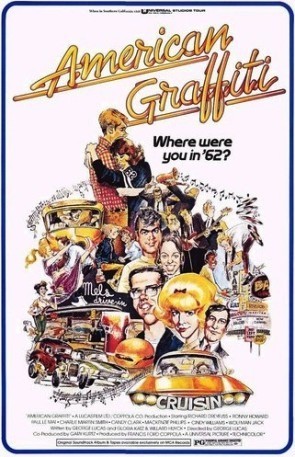
Sonoma and Sonoma County are in the heart of California’s wine country and can be considered the birthplace of the state’s viticulture, with a history of winemaking stretching back to the 1800s. Ranked the 32nd county in agricultural production in the US (2002), Sonoma County sees more than 7.4 million tourists each year.
Due to the diversity of its landscape, both the city and county became key shooting locations for classics like Alfred Hitchcock’s The Birds (1963), cult horror film Scream (1996), American Graffiti (1973), and The Farmer’s Daughter (1947).
6. Monterey

Located on the southern edge of Monterey Bay, Monterey County and Monterey have been a significant arts and culture hub for the state since its founding. Affectionately nicknamed the Language Capital of the World and California’s ‘First’ City, the city was home to California’s first theater and a number of the state’s first public institutions.
Over 200 films have been shot in Monterey, from pieces of cinema history like Hotel Del Monte (1897), to movies set in Monterey like Turner and Hooch (1989), to those that take advantage of Monterey’s resemblance to other places, like Louisiana in The Muppet Movie (1979).
7. Guadalupe
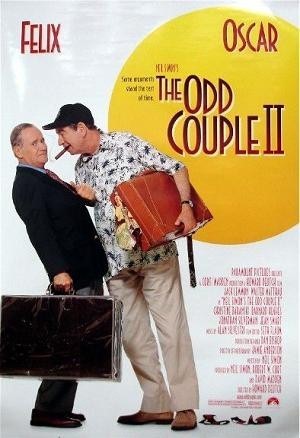
I’m not going to lie — despite my extensive love for California and all the research I’ve done about the state, I had literally never heard of this place. Apparently located in the northwestern tip of Santa Barbara County, and with a population of just over 7,000, Guadalupe is probably best known for the Guadalupe-Nipomo Dunes (the largest remaining coastal dune system south of San Francisco), which crash right into the Pacific Ocean.
The dunes alone draw filmmakers to the area, and are featured in The Ten Commandments (1923), The Odd Couple II (1998), Pirates of the Caribbean: At World’s End (2007), and Hidalgo (2004).
8. Ventura
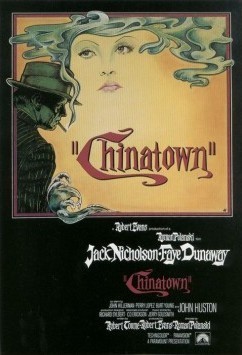
The 100,000 or so residents of Ventura live on the southern coast of California, northwest of Los Angeles. Ventura has a little bit of everything — surf, sun, shoreline, oil fields, wineries, mountains, farm fields, and a harbor make it an ideal location for filming.
Home of the Ventura Film Festival, it has been the site for the partial and/or complete filming of such titles as: The Rock (1996), The Aviator (2004), Erin Brockovich (2000), Chinatown (1974), Little Miss Sunshine (2006), and Swordfish (2001).
9. Orange

So much more than a color and a fruit, the city of Orange, in Orange County (surprise), is considered unusual due to the proportion of preserved homes built prior to 1920. Founded in 1869, it has become a major modern shopping destination, but the city’s Old Towne area retains many features that speak to its history.
It’s exactly that “old-timey” feel that much of the film industry comes to take advantage of, though Orange is also home to Chapman University, which draws a different group of filmmakers. As a result, some of the films shot in the city include: Gumball Rally (1976), Crimson Tide (1994), Black Sheep (1996), Small Soldiers (1998), Adventures of Rocky and Bullwinkle (1999), Big Momma’s House (2000), American Wedding (2003), and Accepted (2005).
10. Barstow

Barstow, in San Bernardino County, is home to 22,000 people and possibly my favorite In-N-Out in California. Historically dependent on the gold and silver mines sprinkled throughout the Mojave Desert, today Barstow stands largely as a military hub, location of the Fort Irwin Training Center and Marine Corps Logistics Base.
As an oasis of civilization surrounded by miles of desert, it’s a key base camp for long shots of flat red sand and tumbleweeds, such as those in: The Time Travelers (1964), Roadside Prophets (1992), Broken Arrow (1996), Power Rangers in Space (1997), and Kill Bill: Volume 2 (2004). 
* * *
 Our friends at Visit California asked Matador how we #dreambig in California. This post is part of a series we’re publishing to answer that question. Click here for more.
Our friends at Visit California asked Matador how we #dreambig in California. This post is part of a series we’re publishing to answer that question. Click here for more.

Is Twitter really dead?

Image: Danilo Ramos
When people started saying how useless a social platform Google+ had become, I couldn’t disagree with them. I’ve watched the promising social network site deteriorate over the past two years, wondering if Google would just cut the cord. But then one day, people started saying that Twitter was dead, writing eulogies for it and everything. And I sat there reading each word, thinking to myself, “What the hell are these people talking about?”
Twitter isn’t dead. At least, not for the travel community. As a business tool, perhaps. It barely contributes to website traffic — Twitter is working on that. But the platform’s real staying power comes from its community members. In my opinion, this is the piece that’s holding G+ back but that will keep Twitter going for quite some time.
My experience as a social media manager helps me recognize that Twitter is the simplest social-media platform a person or company can utilize. It’s completely free, and while the Twitter ad program is trying to monetize its users, it doesn’t work the same way Facebook’s ad program does (i.e., it doesn’t clog my newsfeed with irrelevant posts about engagement rings, Taco Bell, and Home Depot). No one really has to “compete” on Twitter, because each tweet has such a short shelf life, it’s really just the luck of the draw that it’s seen to begin with.
is Twitter really dead? Slowly dying? I brought the question to the travel community — via Twitter.
Without Twitter, travel networking would be very different. It provides the sense of community travelers often lack while on the road. It’s the easiest way to stay connected — send out a concise message to your followers, maybe add some keywords, and wait for the responses, favorites, and RTs to pour in. On a recent trip to Norway, I was able to connect with locals, and other travelers, all from tweeting out messages using the hashtag #Oslo.
Twitter’s real strength lies in its monthly / weekly / daily chats. This is where people come together to answer a series of questions on a particular topic, followed by a hashtag denoting their participation in the talk. It’s a chance for travelers to discuss their favorite locations, post photos of foods they’ve eaten, or describe their dream round-the-world itinerary.
This comes in handy, because most travel industry people are freelancers. We might work from home, or find ourselves in a new location each week. We don’t have office cohorts we can gossip with, or who care to even know about our love for travel.
So that social need is fulfilled via Twitter. We can find people with similar interests much faster than through Facebook. We can keep people up to date with our travel plans easier than by maintaining a blog. We can share with the world our real-time emotions and receive instantaneous feedback, just as though we were talking face to face.
So is Twitter really dead? Slowly dying? I brought the question to the travel community — via Twitter. Here are some of their responses:
@KatkaTravels @MatadorNetwork No, Twitter is very much alive,
In d spotlight, vibrant & will thrive.
Though 140 chrctrs, tweets survive!
— Anita (@anitaexplorer) May 2, 2014
@KatkaTravels no! Use it for breaking news, keeping tabs on commute, meeting travelers on road & more! Need more than 140 char to explain!
— Katie Aune (@katieaune) May 2, 2014
@KatkaTravels it’s also still the 3rd highest referrer to my blog after google and Facebook
— Katie Aune (@katieaune) May 2, 2014
@KatkaTravels @MatadorNetwork Not dead, but certainly not very relevant in the grand scheme of things. Horrible click through rates.
— Michael Hodson (@GoSeeWrite) May 2, 2014
@KatkaTravels @matadornetwork no! It's a perfect space for travellers to swap tips & knowledge, make contacts & learn about a destination.
— Flora The Explorer (@FloraBaker) May 2, 2014
@KatkaTravels @matadornetwork news wise, the immediacy can get you out of trouble or alert you to what's going on in a location.
— Flora The Explorer (@FloraBaker) May 2, 2014
@KatkaTravels @MatadorNetwork I still think Twitter is the best implementation of social messaging, rss, and world news.
— Ryan Brown (@JustChuckinIt) May 2, 2014
@KatkaTravels @MatadorNetwork We don't believe #twitterisdead. News and content being delivered real time in 140 characters.
— Biznobo (@Biznobo) May 2, 2014

Matador Network's Blog
- Matador Network's profile
- 6 followers



